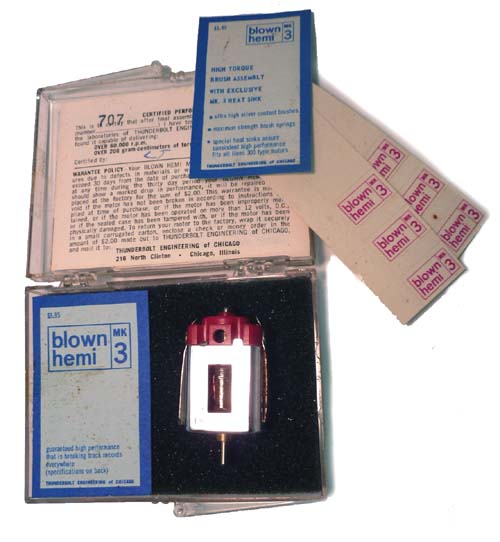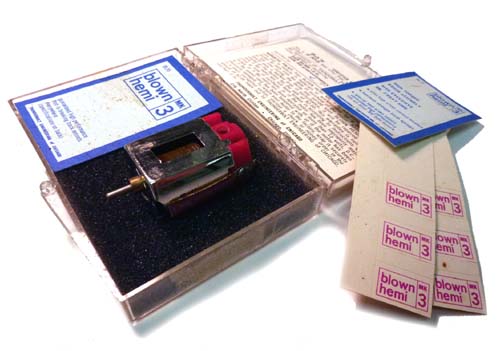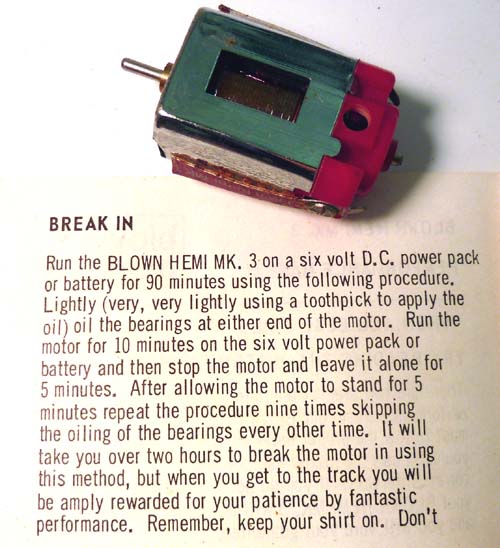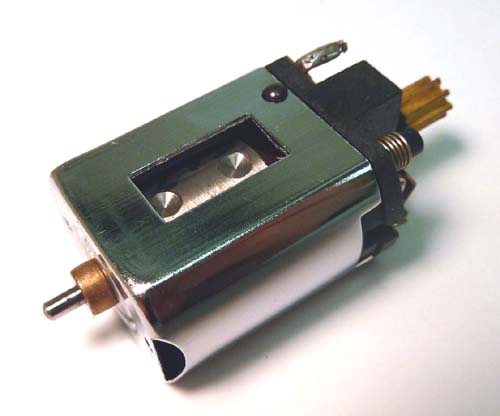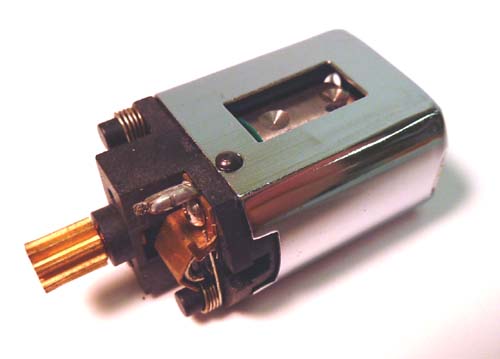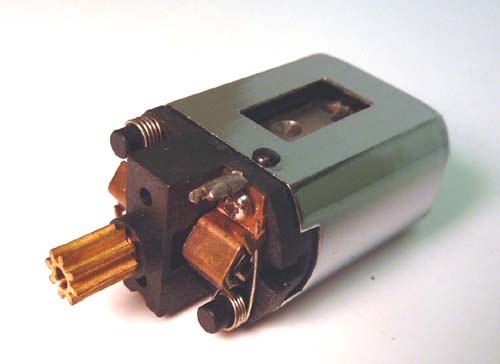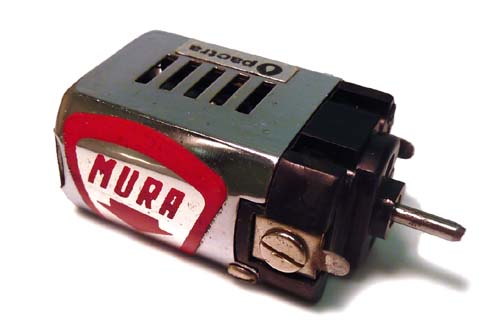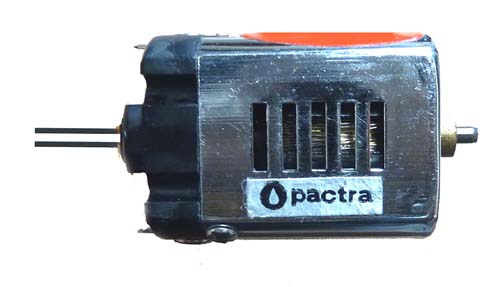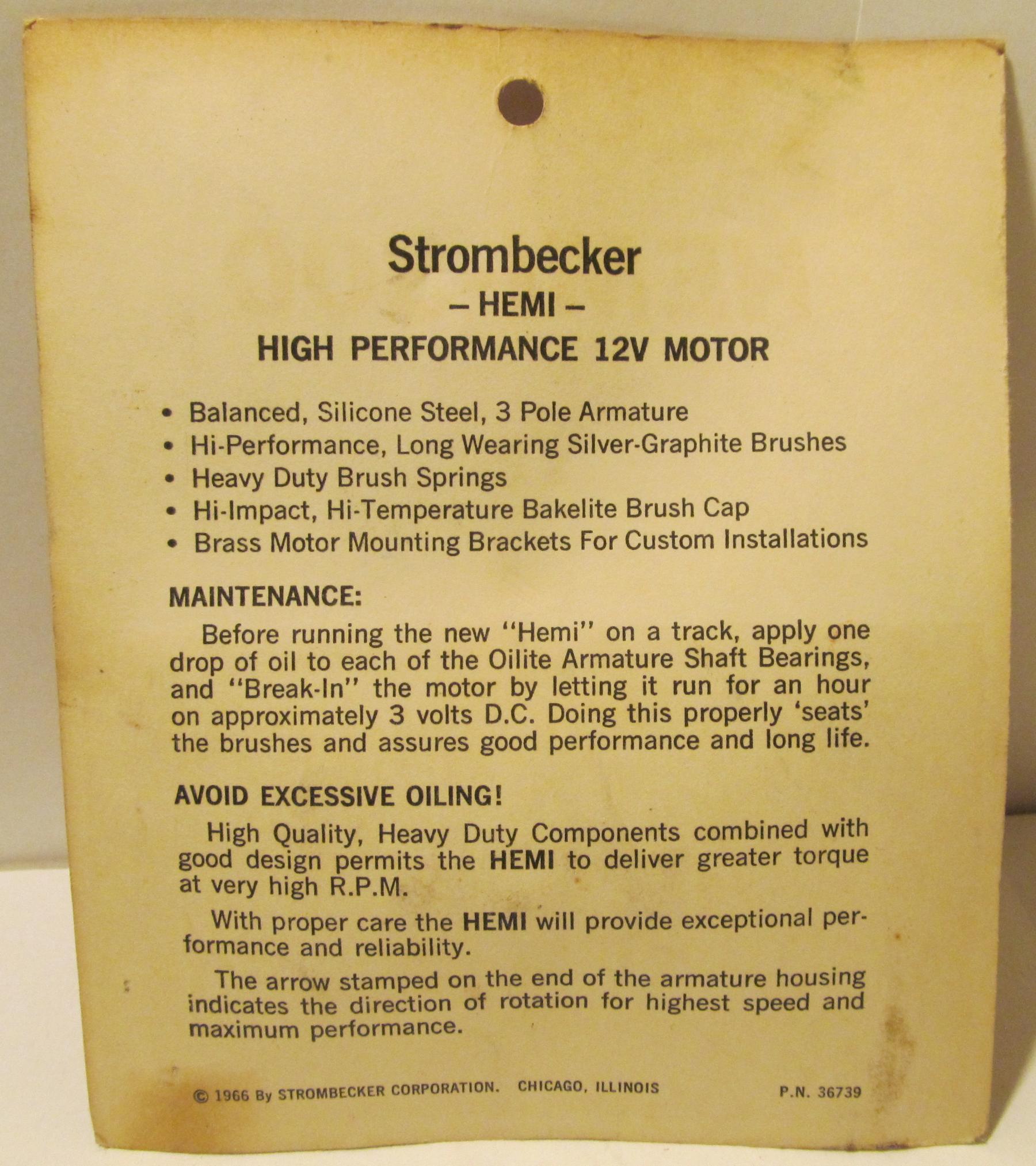Igarashi can motors made simpler
I wrote several attempts to figure out the various versions of the "Hemi" motors manufactured in the 1960s by Igarashi. First, I was mistaken many years ago when I believed wrongly that the "Hemi" motors, sold in Strombecker and Pactra models, were manufactured by Hitachi. There is absolutely zero connection between Igarashi and Hitachi or even, HIT, which is a Marusan sub-brand. I had deducted this from looking at the mysterious 1/24 scale "P1" Japanese slot cars of the Ferrari P2 and Lola T70, that someone on a Japanese site had called (wrongly) "HIT". Now I got things straight and weeded out previous confusing information, so as to present what I now believe is well over 95% correct and complete. So here it goes:
Before manufacturing can-type motors, the Japanese Igarashi Electric Co. founded in 1952, built pole-type motors exclusively for Strombecker. Indeed, Strombecker used KMK and Mabuchi motors in all their models from 1959 through 1962, when they concluded an exclusive motor supply in full partnership with Igarashi. After this Strombecker used the Igarashi motor shown in this kit in various plastic and aluminum chassis until the 1966 year:
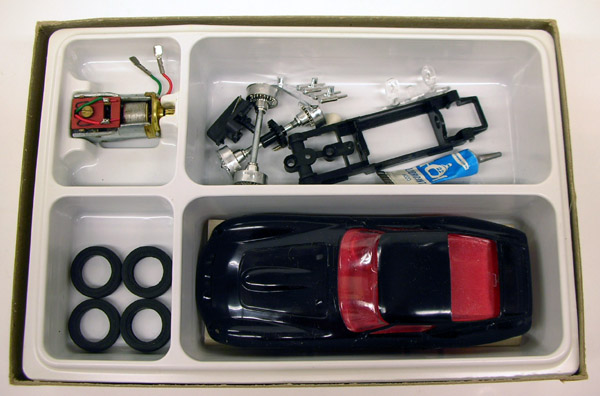
When Igarashi issued their can motors in 1966, their manufacturing quality compared to that of Mabuchi's was quite superior, but it had several engineering flaws that reduced its appeal to customers, besides having a higher retail price.
The armature stacks were made of better silicone steel material with thinner laminations, and had a better quality commutator than that of its Japanese competitor. Its magnets were also quite superior to that of the Mabuchi motors. Its endbell was made of a more brittle but much more heat resistant material than that of the Mabuchi.
Unfortunately the cylindrical brushes wore more rapidly than that of the Mabuchi motors, and the sintered bronze-powder can bushing, at least on the smaller motors, was retained by a riveting process that broke the material and caused many failures, the bushing simply and often falling off the can. However, Mura and at least one other rewinder used many "Hemi" motors as basis for rewinds, often mixing Mabuchi and Igarashi components.
STROMBECKER
TC32: sized like a Mabuchi FT16D. Pinion on the can side. Introduced in 1966 for the new 1/32 scale Strombecker kits using the 2-piece brass chassis. Chrome plated can, green wire on armature, royal blue endbell marked "Strombecker". The endbell is retained by four tabs stamped in the one-piece drawn can, folded in cavities molded on the Bakelite endbell. 1967 "Hemi 300" versions have red endbells and hotter armature specification with larger orange wire and were never sold in the 1966-only boxed kits, only in bagged kits or semi-RTR models. Motor discontinued by late 1967 but still sold until the end of 1968 from existing inventories.

TC24: sized like a Mabuchi FT36D. Pinion on the can side. Introduced in 1966 for the new 1/24 scale Strombecker kits using the 2-piece black-anodized aluminum chassis. Chrome plated can, orange wire on armature, royal blue endbell marked "Strombecker". The endbell is retained by four tabs stamped in the one-piece drawn can, folded in cavities molded on the Bakelite endbell. 1967 "Hemi 400" versions have red endbells and hotter armature specification with larger orange wire and were never sold in the 1966-only boxed kits, only in bagged kits or semi-RTR models. Towards the end, other endbell colors were produced: light orange, light blue, white, purple... Motor discontinued by late 1967 but still sold until the end of 1968 from existing inventories.
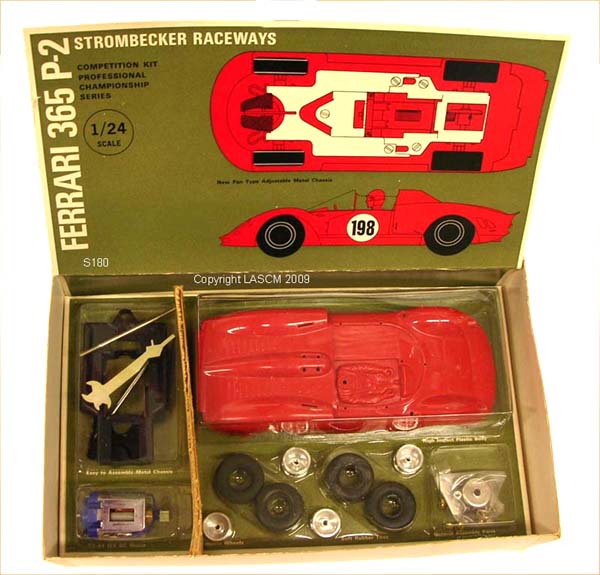
Motor kit: Strombecker sold the Hemi 300 with red endbell as a kit, with a blank armature and rewinding wire, sold in a plastic tube with a cap.
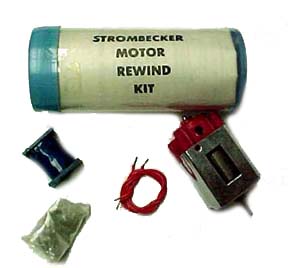
AT-300: This 16D-size motor used a modified TC24 can with more endbell-side clearance so as to fit a system of brushes with adjustable timing. A new red endbell had an inner black Bakelite drum supporting the cylindrical brush holders. The endbell was affixed to the chrome plated can by folding tabs.
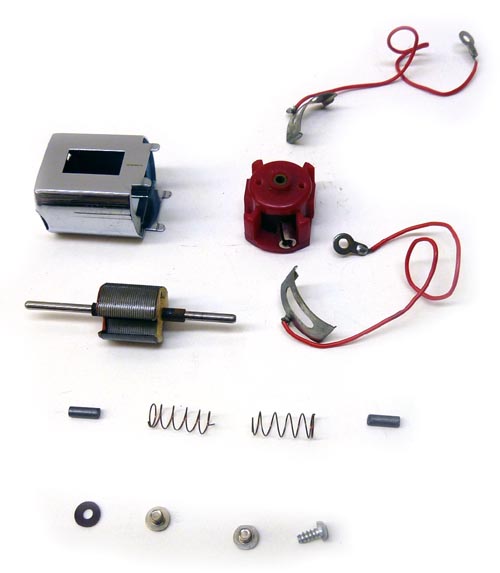
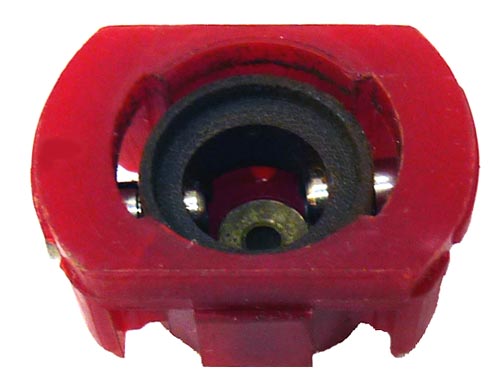
AT-400: This was the larger version of the AT-300.


Strombecker, partner with Igarashi, allowed the sale of similar motors to Pactra and Russkit.
PACTRA
Hemi X-88: In 1966, Pactra issued a series of kits and RTR models , followed by a much smaller second generation in 1967 and an even smaller third series early 1968. These models were all, at the exception of one car, powered by Igarashi motors. The Hemi X88 was a slightly hotter version of the Strombecker TC32, using a red endbell and larger orange wire in the same chrome plated can. It was sold at first separately in an orange box with two motor-mounting plates, then found in some late-edition 1967 kits and RTR models so as to use existing stocks. Other X-88 motors exist with black or light blue endbells.
Hemi X-88: This is the same motor as used in the 1967 Strombecker 1/32 scale RTR cars, and also used in many Pactra kits and RTR models also issued in 1967:
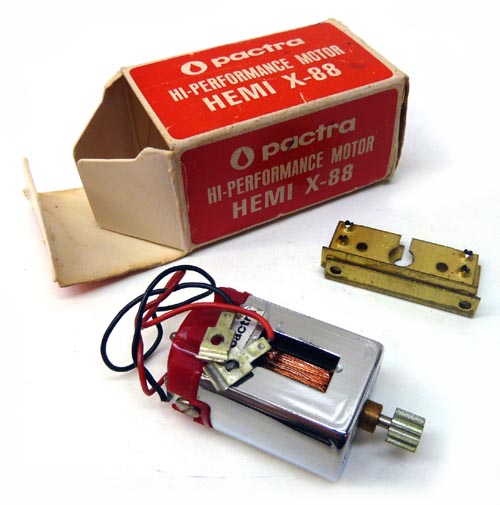
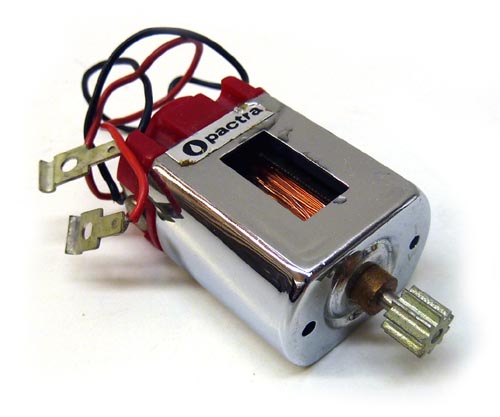
Hemi X-98: This was Pactra's version of the Strombecker Hemi 400 with red endbell. It was only sold separately in an orange box with two motor-mounting plates.
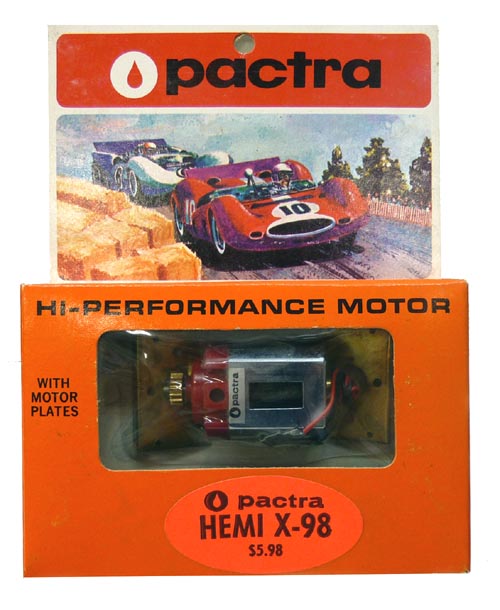
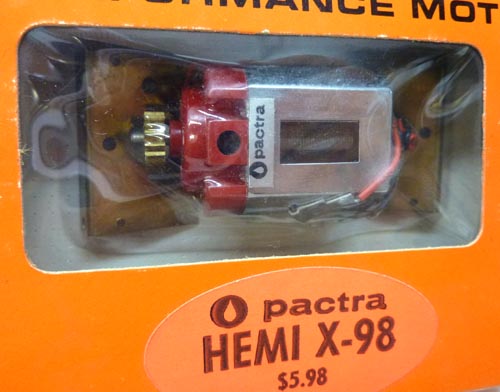
Super Hemi X-88 MK2: This was a 16D-size motor with epoxied green wire and a new can that retains the orange colored endbell no longer with tabs but with a small 2mm metric machine screw on top and bottom of the can. The pinion is on the can side. Many Pactra kits and RTRs as well as a few Russkit export models, utilized this very pretty motor also sold separately in the same orange box fitted with an additional gold sticker.
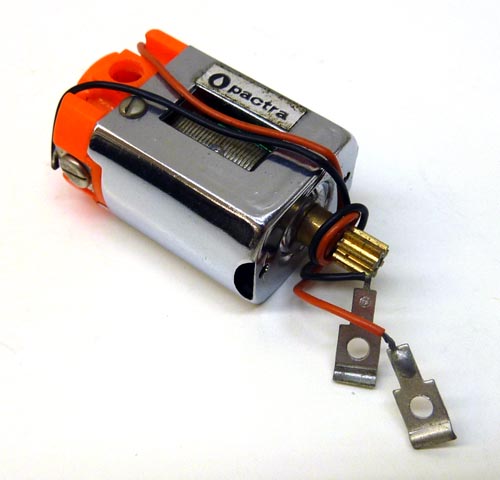
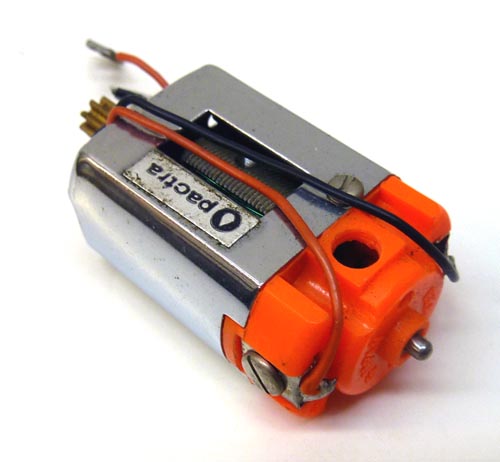
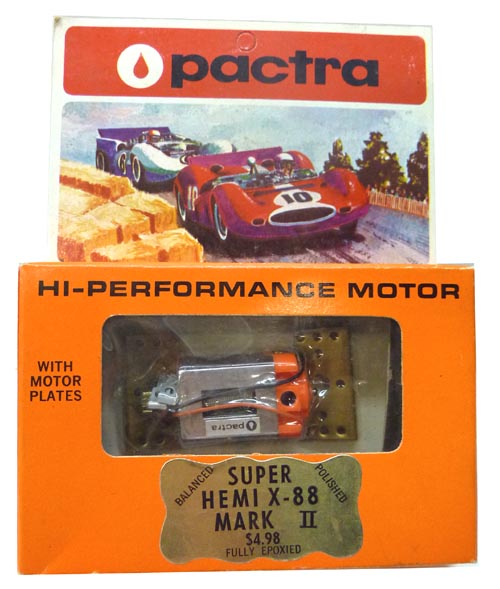
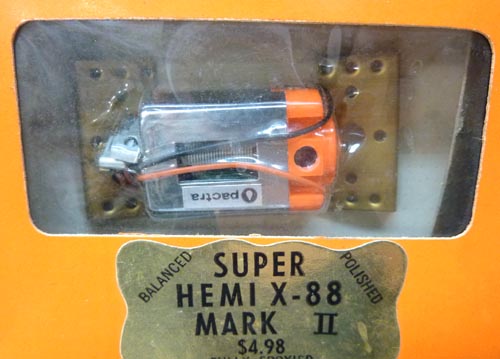
Here is a rather rare one with purple endbell:
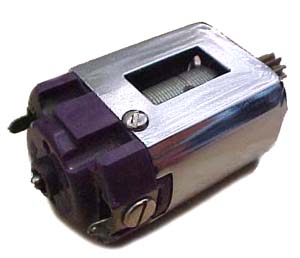
Super Hemi X-88 MK2 motor kit: Offered in a clear plastic rectangular box, this kit had everything to build a complete motor. Chrome can and orange endbell identical to that of the standard MK2.


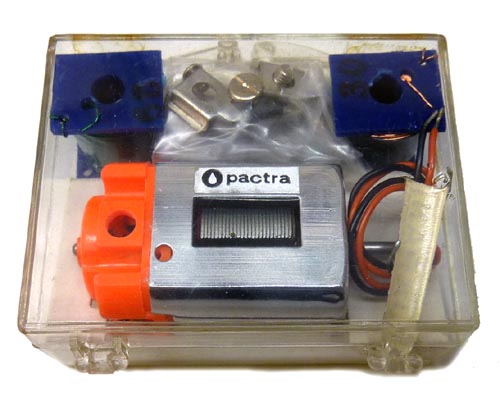
Hemi X-99: This ultra-rare motor used an improved armature with twin shafts fitted in a modified chrome plated can with 5 venting slots and the same retaining screws as seen on the X-88 MK2, but now fitted on the sides of the can, allowing the motor to sit lower in the chassis. It is almost certain that seen the very small number of them around, they were on the market in some form for a very short time. Some of these motors were used by Mura as a base for their rewind jobs. They are equally as scarce.
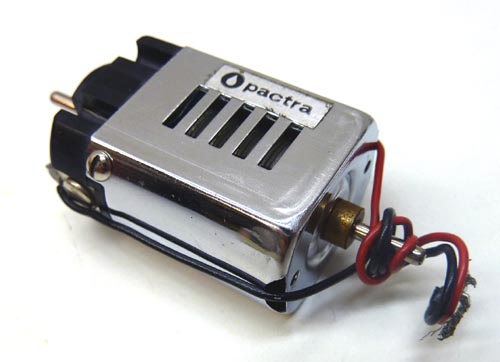

Hemi X78 "Black Streak": This was a rewound version of the Hemi X-98 now with a black endbell and what appears to be a Mura rewound armature featuring a larger commutator reminiscent but not identical to that used by Champion on their rewound "700" series motors. It was dynamically balanced and "electronically tested".
Hemi X98 "Rewind": This was a rewound version of the Hemi X-98 now with a red endbell and what appears to be a Mura rewound armature. It was dynamically balanced and "electronically tested".
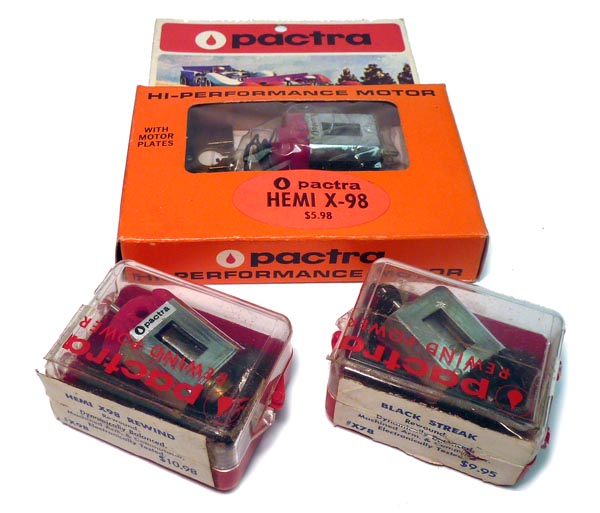
Pactra also used a Mabuchi FT16DBB in their Meyers Manx Dune Buggy model, but we have so far only seen ONE example of this hyper-rare car. Pactra also had a motor produced in Hong Kong called the "Eliminator", but it does not appear to be made by Igarashi, so I have not included it here. It looks almost like an early Parma 16D from the early 1980s, and was issued in 1968.
Pactra's little mysteries
Pactra had several products in their line that appear to have never been issues. Besides a sidewinder chassis illustrated by a line drawing on all the back their RTR boxes, they also had the following motors described on the back of their larger motor boxes:
Tornado X-66 with 10T pinion
Tornado X-76 with 16T pinion
These two motors (one assumes that there was a smaller and larger one) are described as having "3-pole arm, epoxied stack, oilite bushings, ring type ceramic magnet, cylindrical brushes with single screw removal". The "ring-type magnet" sounds like these would have been cylindrical-shaped motors, maybe from Wilson's motor line? The mystery today is simply that, a mystery.
RUSSKIT
Russkit "28": This twin-shaft motor was identical to the Hemi X-99 at the exception of its finish, the can being zinc plated in a dark gold, almost green finish. It had a black endbell and two machine screws to retain its endbell.
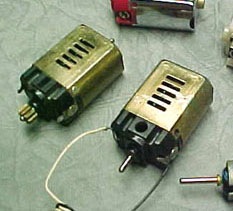
Russkit only issued a few RTR with these motors in 1968, all in the 1/32 scale. Parma took over the production of these models in 1970 and sold 3 cars using this motor until stocks were exhausted.
TESTOR
Testor Turbo MK1: This Igarashi motor had a zinc-alloy (Zamak) die-cast endbell, and Pittman-style brushes. The chrome plated can with intricate detailing around the screw holes retains the endbell with two machine screws. Testor used it in their late-production RTR models, the most famous using this motor being their glorious Ferrari 330P4 Spyder model, one of the prettiest slot cars ever produced, as well as the second (and rather scarce) version of the Harrison Indy car.

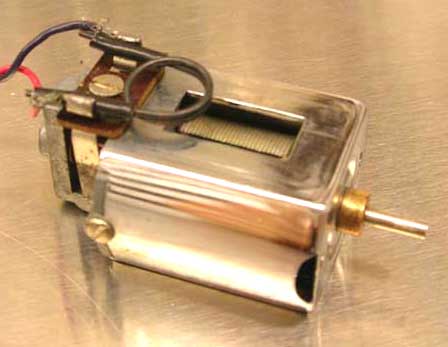
OTHER BRANDS
"Blown Hemi MK3": This motor marketed by a company called "Thunderbolt" was a rewound Hemi X-88 with red endbell, on which the armature was epoxied but neither polished nor balanced. Aluminum blade-style heat sinks were fitted on each brush holder, covered with a sticker with the name of the motor:
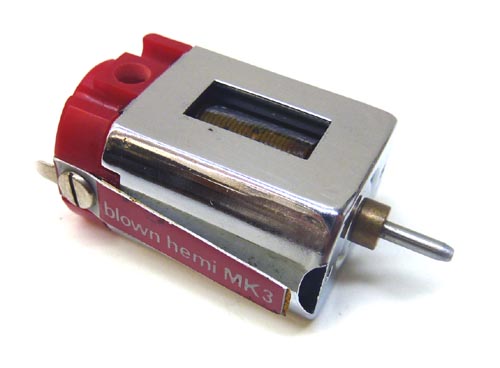
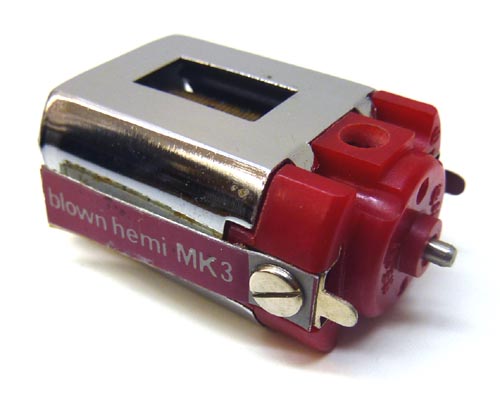
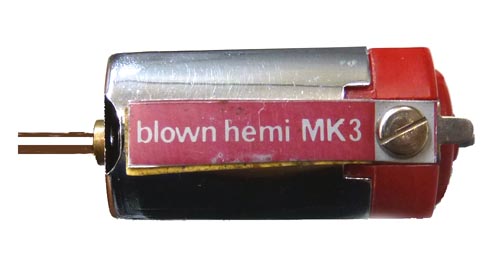
Igarashi made many other motors for Strombecker, but we are here only talking "Hemi" and derivatives, so this should be it.
And... that's all folks. Unless someone can show me another version not already included in the above, at which point I would really appreciate the help.









